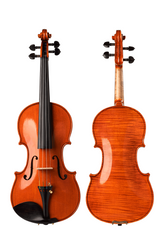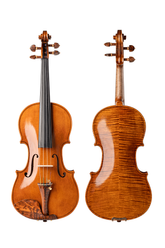Violin Maestro Perlman's Daily Practice Checklist
The path of learning the violin is long and challenging, requiring immense perseverance and diligent practice to achieve one's goals. However, if we use impractical practice methods, even putting in a lot of effort may often lead to less than ideal results.
Therefore, for every violin learner, effective practice methods are invaluable. In other words, knowing how to solve the most difficult problems in the shortest time and with the simplest methods is crucial to maximize progress.
The First Hour: Scale Practice
Perlman emphasizes that the purpose of scale practice is to develop the right-hand sound production technique. We need to explore the bow pressure and speed required to produce a good tone, while also improving control over the bow. Achieving good tone quality and control requires a certain level of mastery over the bow.
Additionally, scale practice includes intonation training. Ensuring accurate intonation during scale practice is essential, as it helps to easily find the correct pitches when playing pieces.
Perlman shares a story about retired cellist Heifetz, who still practiced scales every morning, considering them an essential part of his daily routine. Scale practice is crucial because it encompasses the elements of nearly all musical pieces. For instance, Perlman mentions Beethoven's Violin Concerto, which starts with an octave ascent. If we regularly practice octave ascents within scales, we won't struggle to find the correct pitches when playing this section. Furthermore, scale practice should encompass not only single-note scales but also third, sixth, eighth, and tenth intervals, as well as arpeggios. Comprehensive scale practice requires about an hour.
The Second Hour: Etude Practice
The choice of etudes to practice should depend on one's skill level and areas that need improvement. If there are specific techniques that need refinement, select etudes that address those particular challenges. Perlman shares his own experience from childhood when he wanted to improve his bowing technique. He chose an etude specifically designed for bowing practice. Despite his love for playing the violin and dislike for practice, consistent effort improved his bowing technique significantly.
The Third Hour: Piece Practice
After completing the first two practice sessions, one can move on to playing complete pieces. When practicing pieces, it's not necessary to play them from start to finish immediately. Instead, focus on challenging sections first, and then play the piece in its entirety. If difficulties arise when playing the entire piece, identify those problem areas and work on them separately.
Important Note: Avoid Overpractice
Overpractice can be dangerous and may lead to repetitive strain injuries, especially in the wrist. The recommended practice interval is 50 minutes of practice followed by a 10-minute break. Practice sessions should not exceed 5 hours. Beyond 5 hours, the body cannot handle additional strain, and the brain becomes less receptive to learning, similar to a sponge saturated with water. Perlman suggests practicing for 3 hours daily, but the duration should be adjusted according to individual circumstances, with the absolute limit being 5 hours.
This practice regimen is highly practical, providing clear guidance for daily practice. It ensures that learners know what to practice and how to allocate their practice time effectively. Perlman's advice is detailed and thoughtful, offering valuable guidance to learners.





